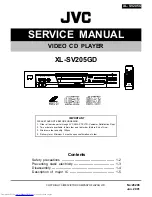
Always wear protective gloves when changing
blades.
The blades should always be sharpened or replaced
at the same time. Otherwise, the appliance will
become unbalanced which will cause vibrations and
decrease the electric planer's service life.
1.
Lay the planer with the base retaining plate facing
upwards;
2.
Turn the roller until the bolts of one of the blades are
visible;
3.
Loosen and remove the blade fixing bolts;
4.
Pull the blade retaining plate outwards;
5.
Remove the blade and sharpen it;
6.
Set the blade position on the adjustment bolts according
to the wear on the blade. This guarantees the cutting
depth defined in the technical data of the planer;
7.
Attach the blade to the roller. Align the holes of the
blade and adjustment bolt with the groove and the holes
of the roller respectively;
8.
Fit the blade retaining plate and tighten the bolts;
9.
Turn the roller 180° and repeat the procedure for the
other blade.
After the blade’s installation and before using the
power tool, test it at full speed at no load for a while.
Check for misalignment of the blade or any other condition
that may affect the power tool’s operation. Check that all
moving parts rotate smoothly, without abnormal noises.
1.
Loosen the parallel guide fixing bolt (3);
2.
Insert the parallel guide (1) into the hole and tighten the
bolt (3).
The parallel guide can be installed on both sides of
the planer.
The power tool is designed for planing wood materials
(such as beams and boards), make notches or chamfering
edges.
While operating the planer, you should take into
consideration some procedures:
▪
Always ensure that the planer is switched off before
plugging in the power cord and during transport. If you
have the "ON/OFF" switch pressed when connecting the
power cord or carrying the planer, accidents and injuries
to the user may occur;
▪
Never hold a workpiece with your hands or use your legs
as a support while you are working. Secure the
workpiece on a stable and completely stationary surface;
▪
Hold the appliance with both hands, one on the handle
and the other on the depth adjustment knob;
▪
Ensure that the blade guard is always fitted;
▪
Make sure there are no obstructions on the surface to be
worked on;
▪
Never use the planer on metal parts or wood parts with
nails, screws or other metal objects. Remove metal
objects from the workpiece before using the planer;
▪
Do not apply too much pressure on the planer against
the work piece/object, the weight of the planer applies
enough pressure. If the speed drops abruptly, you
should reduce the pressure applied immediately;
▪
Move the planer steadily during operation;
▪
Always use sharp blades in good condition. Replace
damaged or bent blades immediately;
▪
Never switch the planer on when the blade is in contact
the workpiece. Do not touch the blade to the workpiece
until it has reached its maximum rotation speed;
▪
Do not use the planer if there are cloths, fabrics, wires or
similar objects in the work area;
▪
Do not tilt the planer, thus avoiding unwanted planing
marks;
▪
Run the planer in the direction of wood grain;
▪
After switching off the planer, the roller will continue to
rotate for a short period. Never put the planer down
before the roller has come to a full stop.
Summary of Contents for VIPL6
Page 1: ...PLAINA EL TRICA CEPILLO ELECTRICO PARA MADERA ELECTRIC PLANER RABOT LECTRIQUE...
Page 4: ...PLAINA EL TRICA 600W VIPL6...
Page 14: ...CEPILLO EL CTRICO PARA MADERA 600W VIPL6...
Page 24: ...600W ELECTRIC PLANER VIPL6...
Page 34: ...RABOT LECTRIQUE 600W VIPL6...
Page 45: ......
Page 46: ......
Page 47: ......
Page 48: ...VIPL6_REV01_JUN22...
















































